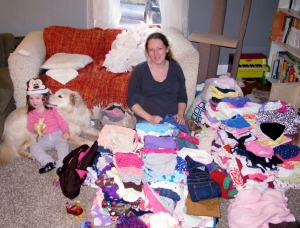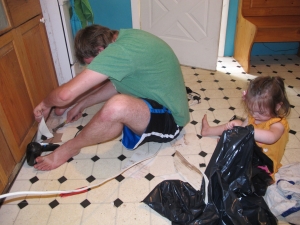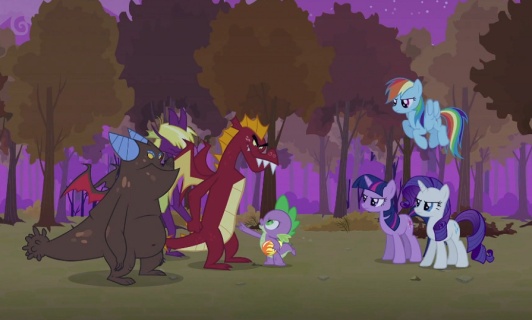Category Archives: Uncategorized
Why I march… science edition.
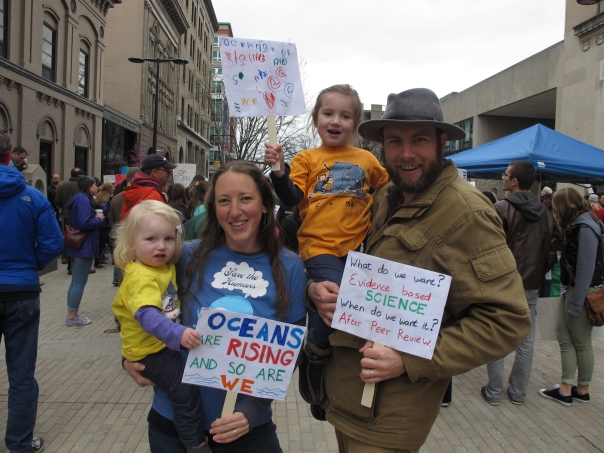
And we’re back out on the streets. For some reason, science is no longer a priority for the government. Under the current regime of minimizing domestic programs, the White House has proposed huge cuts to the NSF, EPA, NIH, NASA, the Office of Science at the DOE, shall I go on? And what is even more baffling, modern policy development often contradicts well-established scientific research.
I can’t compete with the numerous well-researched and exposited outcries from the scientific community and science enthusiasts about the risks of the anti-science shift in the present administration. However, to add to the content on this issue, I present the letter I wrote to my congressional representative about the connection between my own research and real-world problems. My work can serve as a single example of the 6 million scientists who are running labs, building models and solving problems to make the world a better place. (For a quick summary, skip to the bold paragraph near the end.)
Representative Tom Reed
401 E. State St. Suite 410
Ithaca, NY 14850
Dear Representative Reed:
I am a postdoctoral associate in a joint collaboration with the Cornell Atkinson Center for a Sustainable Future and the Environmental Defense Fund. I am writing to ask you to reject President Trump’s massive cuts to science in his FY18 proposed Federal Budget. While efforts to construct a thoughtful and balanced federal budget are admirable, Congress will do well to remember that the value of scientific research far outweighs the cost.
My current research is focused on transforming fisheries science and management through the development of a robotic Mobile Ocean Observing Network along the Pacific coast of the US and Canada. Incorporating acoustic surveys from unmanned vehicles will dramatically improve the spatial and temporal resolution of fisheries acoustics data collection, serving to improve stock assessment precision for coastal pelagic species such as sardine and anchovy. A synoptic view of the distribution and abundance of these species will allow a refinement of harvest control rules and improve fishery management under dynamic oceanographic conditions.
Funded by the Department of Defense through the NDSEG fellowship, I completed my dissertation in the Ocean Resources and Ecosystems program in Cornell’s Department of Earth and Atmospheric Sciences. During my graduate work, I used demographic models to show the effects of climate-induced fluctuations in the Gulf of Maine plankton community structure on the endangered North Atlantic right whale. This research delves into Arctic and North Atlantic teleconnections that drive regional changes in the Gulf of Maine ecosystem, as characterized by the climate and oceanographic indices such as the North Atlantic Oscillation, Arctic Oscillation and the North Atlantic coupled slope water system. Without an understanding of these global-scale climate processes, it would have been impossible to accurately characterize the demographic dynamics observed in the North Atlantic right whale population. The right whale is at severe risk for extinction with only 522 animals remaining, and careful research into the mechanisms that effect population growth and demography is essential for the successful management of the species.
This summer I will begin a postdoctoral position at the Marine Science Institute of UC Santa Barbara. This research, funded by the federal Bureau of Ocean Energy Management, will examine the feasibility of repurposing decommissioned oil rig infrastructure to provide artificial reef and nursery habitat for vulnerable rock fish in the Santa Barbara Channel.
In each of the research projects that I have undertaken as a marine ecologist, there are clear benefits that outweigh the federal costs of funding my research. Science research acts to improve efficiency, minimize risk and provide new technology. Using my own work as an example, after several years, the cost of developing a robotic ocean observation network will reduce ship-based survey costs while increasing the economic value of fisheries by enriching data streams. If my next research project shows that rigs provide suitable habitat for vulnerable marine fish and invertebrates, oil companies and the state of California will considerably reduce spending on massive infrastructure removal, and this program can serve as a model for future ocean infrastructure projects. In all three projects described, my work aims to minimize the risk of biodiversity loss and further ecosystem degradation.
For these reasons, I urge you to reject President Trump’s proposed science funding numbers and continue to support the National Science Foundation (NSF). NSF funding has supported some of the research described in this letter, and provides 68% of extramural federal support for non-medical biological research. Please support an NSF funding level of $8 billion for fiscal year 2018. This would allow NSF to maintain a number of programs that are critical for science innovation and education in the United States. Funding scientific research supports the New York State and the 23rd District’s economies, and is vital to U.S. competitiveness.
Sincerely,
Dr. Erin Meyer-Gutbrod
Postdoctoral Associate
Cornell University
Why I March
It has been made clear to me that many Americans looked at the millions of people taking to the streets in the Women’s March demonstrations yesterday and don’t understand why. My family members and some friends have seen that I joined this march, and they don’t understand my motivations. After all, women enjoy many political and social benefits that seemed unattainable 100 years ago. As always, I am more than happy to clarify my position, and my connection with several political issues that have garnered national attention. This is why I march:
I march because I have a PhD in climate science. Money from oil companies and other interest groups that benefit from the exploitation of fossil fuels continues to fund our campaign system. In return, politicians deny well-researched climate science. Climate FACTS should not be up for political debate. We cannot afford to wait 4 years before committing to a carbon neutral America. The time for action is NOW.
I march because I worked full-time for the same employer for 6 years and gave birth to 2 children. I received 0 days of paid maternity leave.
I march because the cost of enrolling ONE child full time in my employer-sponsored daycare facility costs as much as my take-home pay.
I march because, in the US, 1 in 5 women are sexually assaulted in their lifetime. I have 2 daughters. I do not like those odds.
I march because I grew up in a home with severe domestic violence. The police that responded to my frequent calls favored the assailant as a response to community politics involving my family and misogyny, which is a common and age-old practice. I have learned to treat police with caution and expect bias. The police provide a wonderful service that I am grateful to have access to, but every institution must be held accountable for their operations.
I march because I have attended wedding ceremonies of same-sex couples, and I felt humankind strengthen and revitalize as it does with any celebration of love. Love is good, and must be protected.
I march because I was ridiculed in high school for being the only female to take an Advanced Placement computer programming class. Well, look at me now.
I march because I have worked alongside illegal Mexican immigrants. They worked as hard as their peers while receiving less pay and zero governmental protections. Rather than take advantage of their vulnerability by ripping them from their life and family here, let’s offer them the same protections that the rest of us take for granted. We are a nation of immigrants.
I have had personal experience with many of the issues that are currently under political debate. And despite my childhood exposure to financial hardship and violence, I recognize that I have lived a life of privilege. I am sympathetic to others who have faced struggles different from mine. I march for them, too.
Am I grateful for the rights and protections offered by my country? Yes I am. Am I proud to be an American? Hell yes. Can we do better? Yes we can.

The joys of mothering
At the end of May, the month of Mother’s Day, here are a few things that made me happy to be a mom this year:
Every single action in my day is observed, questioned and interrupted. I am constantly answering to my little ones, assisting with everything. How is it that such small people can be so hugely demanding? Yet, like everything in life, the more you put into it, the more rewarding it is. And parenting is really the ultimate example of this. This post on the Austin Mom’s Blog perfectly captures the absorbing and exhausting nature of parenting young children, and I couldn’t agree more with the last paragraphs:
http://austin.citymomsblog.com/2016/04/20/stage-life-hard/
And thinking about the rich rewards of motherhood, this video gave me all the feels:
Finally, motherhood would be a much sadder, lonelier and colorless experience without a fabulous, remarkable, engaged and loving partner to share it with. There is no one I would rather tag team these little beasties with than my best friend:
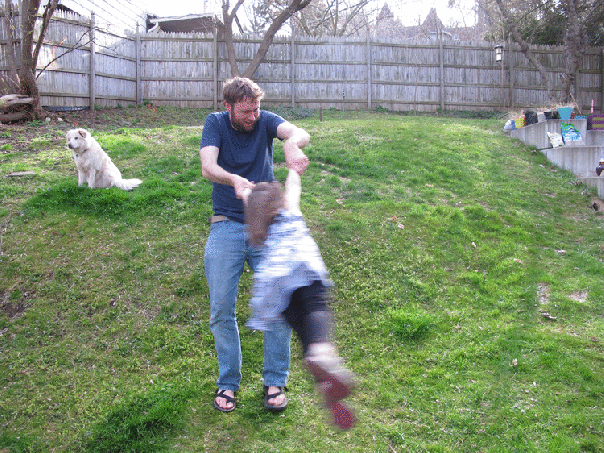
Babies don’t keep
Mother, oh Mother, come shake out your cloth
empty the dustpan, poison the moth,
hang out the washing and butter the bread,
sew on a button and make up a bed.
Where is the mother whose house is so shocking?
She’s up in the nursery, blissfully rocking.
Oh, I’ve grown shiftless as Little Boy Blue
(lullaby, rockaby, lullaby loo).
Dishes are waiting and bills are past due
(pat-a-cake, darling, and peek, peekaboo).
The shopping’s not done and there’s nothing for stew
and out in the yard there’s a hullabaloo
but I’m playing Kanga and this is my Roo.
Look! Aren’t her eyes the most wonderful hue?
(lullaby, rockaby, lullaby loo).
The cleaning and scrubbing will wait till tomorrow,
for children grow up, as I’ve learned to my sorrow.
So quiet down, cobwebs. Dust go to sleep.
I’m rocking my baby and babies don’t keep.
-Ruth Hamilton
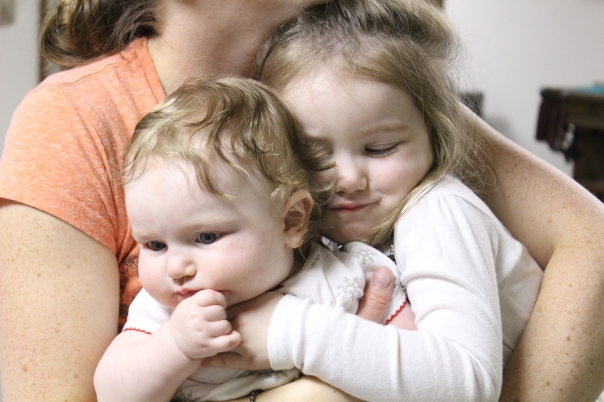
I know I’m behind on blogging. I’ll get back to it, I promise.
Nesting
Knee-deep in the third trimester, I’ve been going through a serious bout of nesting. It’s tough when you’re buried in piles of To Do lists but don’t have the energy to stand up from the couch. However, by capitalizing on short lived energy spurts and an incredible amount of help from my hard-working husband, we’ve been making it through the final weeks of pregnancy that always seem to coincide with lengthy and illogical lists of chores.
The first (and probably most fun) task in preparing for baby is sorting through your older children’s clothes. Having two girls spaced two years apart means that I probably won’t have to buy a single item of clothing for #2. However, I still needed to sort through and organize the mountains of clothes that Evee has outgrown. A more organized mom would have already stored old clothes by size and season, but where is the fun in that?
The most daunting task on my To Do list was to refloor the kitchen. Sure, this doesn’t seem like it has much to do with a newborn baby. However, since we ripped the (already stained, already torn) linoleum while moving the refrigerator in the first week of buying this house, I have been eager to refloor. We did a mountain of home renovation tasks when I was pregnant with Evee, so it’s no surprise that we didn’t make it to reflooring before she was born. Of course, after Evee was born, home renovation came to a screeching halt. Now that she’s older and much more independent, we have to capitalize on the short time we have left to get these big projects done before we re-enter the psychosis of caring for an infant. So with $500 in supplies and a full weekend of hard work, we managed to tear out the old, damaged linoleum and replace it with a really sturdy “floating floor”.
Our weekends are usually centered around fun, toddler-focused family activities, so Evee was pretty bummed out that we spent the whole weekend reflooring, but we made it up to her over the following weeks with lots of play dates, river swims and generally awesome outdoor fun.
We built three more planter boxes to line up with the three planter boxes we built a few years ago. Now with 6 boxes, we have created a sturdy fence at the top of our backyard retaining wall to stop young children from running down hill and falling 4 feet onto a concrete patio. It’s really just an eco-friendly toddler suicide prevention device.
We’ve also rehabilitated an old dresser to store baby’s clothes, painting it the same purple and green color combo that I used for the new planter boxes. I’ve replaced our frighteningly ugly love seat (featured in the picture above where I’m sorting Evee’s clothes) with a much less frightening love seat from craigslist. And of course the house has been deep cleaned.
Since I am planning a home birth, there’s some extra work that needed to be done to prepare for that. Apparently, a home birth generally requires an enormous amount of linens to mop up all the blood, gore, and amniotic fluid that will be flung about all willy nilly. So I asked for a linen donation from a local hotel, and they offered me a huge pile of sheets, towels and washcloths that no longer make the cut for room service. I bleached all of these, ran them through the hottest, longest drier cycle and stacked them into 10 paper grocery bags and stapled them shut. Each bag of linens was sterilized in my oven for an hour at 250*F, and piled in a giant box with other home birth supplies. We also bought an inflatable kiddy pool for me to labor in and a box of medical supplies that includes chucks, umbilical cord clamps, sterile scissors, latex gloves, plastic sheeting, etc.
Now I’m 37 weeks along (officially full-term!), and finally feeling like we are ready for this baby. Evee has been watching home birth videos every day and cannot WAIT to help take care of a newborn. She frequently reminds me that if she is sleeping when the baby comes, we need to wake her up so she doesn’t miss it. My mother in law is coming to stay with us for 3 weeks to ease the transition, the midwife is on stand-by and my body can’t possibly handle gaining more weight. So come on, baby!
The Pubescent Stage of the Industrial Era
Yesterday I had lunch with Andrew Revkin, author of the NY Times Dot Earth blog, and I’d like to share some of my thoughts about our conversation. Revkin made an interesting analogy between the growth of industry and the stages of human development. In terms of our fossil fuel use, Revkin argued that humans are in the pubescent stage, where, like a teenager acclimatizing to the newfound size, strength and knowledge recently accumulated, humans must become habituated to our ability to harvest fossil fuels. Relative to the nascent period of fossil fuel discovery in the mid 19th century, the 20th century was characterized by building infrastructure to satisfy a cultural shift to the worship of fossil fuels, typifying energy and plastics as the crux to our “modern, convenient lifestyles”.
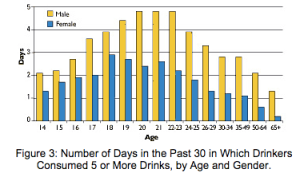
Puberty is not typically characterized by wise decision making…
(http://pubs.niaaa.nih.gov/publications/AA73/AA73.htm)
Stretching Revkin’s idea to the next logical stage in our cultural development, we are hitting the climax of fossil fuel extraction and use. Peak oil analyses indicate that as we empty the most accessible reservoirs of carbon, oil, gas and coal will become more expensive to excavate (e.g. dirtier tars that require more refinement will be harvested after cleaner and purer resources are exhausted; wells must be dug deeper after shallower reserves are consumed). In the meantime, 97% of scientists recognize that global climate change is indeed caused by human industry, and the effects of these changes are both broad and deep. It is time to enter the more mature adult stage of this new industrial society and try to marry some of the fantastic advancements of modern technology with sustainability.
As with the excitement and vulnerability of emerging adulthood, we are locked in a race between our potency and our awareness of that potency and its effects. So caught up in the thrill of discovering new tools, we haven’t developed the cultural wisdom to stop and question whether they should be used, and how we can best implement them. It is time to temper our fervent launch into the industrial age with mindfulness. This doesn’t necessarily mean a rejection of technology, but a shift away from the over-confident and entitled “burn-baby-burn” approach of cheap luxuriant living without considering the effects on neighboring communities, global ecology and preservation of resources for future generations.

We can use technology to enjoy the benefits of industry in a responsible, ethical way. If there is anything that the pubescent phase of the industrial age has revealed, it’s that technology is nearly limitless! We are not impeded by existing (read: fossil fuel hungry) infrastructure – look at the cities we’ve built in the past decade! They can be rebuilt and revised to serve a sustainable lifestyle. We are not impeded by stubborn social psychology. Look at the inter-generational fluidity in ideology! Just in the 20th century, we have already tackled some of the social challenges that have piggybacked the industrial revolution by implementing new deal labor regulations, establishing the Food and Drug Administration and starting the conservation movement. Recent human history has already demonstrated an interest in progress that improves quality of life and addresses social inequality.
So what are we waiting for? Let’s face it. Puberty sucks. It’s time to grow up, take responsibility for our actions and start building a global community that is aware of its own potency and can balance progress with mindfulness.
What My Little Pony Has Taught Me About Gender Identity & Expression
I’m about four years late for the party, but I recently got in touch with my inner five-year-old girl and watched every single episode of My Little Pony: Friendship is Magic.

Four years ago, when this cartoon first aired, a few critics and parents, along with a large subpopulation of the internet–unexpectedly, most of them adolescent to adult males–sat up and took notice. Here was something new and different in children’s television. This wasn’t just a pink saccharine girls’ show. This was a (yes, often pink and always saccharine) show about how there are, in the words of the creator, “lots of different ways to be a girl.” For the most part (with only a very few flubs), it’s been hugely successful at that mission, depicting unique female characters with different strengths, weaknesses, likes, dislikes, conflicts, and solutions.
But, strangely enough, My Little Pony: Friendship Is Magic can also say quite a bit about what it means to be a boy. Most of the time this message comes not directly from the show itself, but through the show’s male fans. In March, a 9-year-old boy, Grayson Bruce, made national headlines when, after being bullied for his My Little Pony backpack, the school addressed the issue by telling him to leave the backpack at home. (After the incredible outcry about this victim-blaming, the school reversed its position, and took the opportunity to change its approach on bullying–a happy ending!)
There’s not always a happy ending, though. I first learned of Michael Morones, an 11-year-old fan of My Little Pony who attempted suicide in January, from Epbot.com, a blog I read religiously. At the bottom of the blog post on Epbot, there’s a compilation picture of kids who are “Epbot Exemplars,” or “geeks who know what they love and show it with pride.” As you can see, these are often girls who like “boy things.” That’s something our culture has become much more accepting of (even if we still have a long way to go). But boys who like “girl things”? Or children who reject the gender binary altogether? Now that’s a pony of a different color!
But these children are here. They’re speaking up. They’re telling us that they’ve seen the social constructions they’re inheriting from us, and they do not accept them. We need a new vocabulary. These children–and adults–are not necessarily transgender–that term has to do with your gender identity, or a person’s internal sense of their gender (which, by the way, has nothing at all to do with sexual orientation). Rather, we need terms to deal with gender expression–a person’s external projection of masculinity, femininity, everything in between, and/or something else altogether. Another of my favorite blogs, Raising My Rainbow, has taught me several words in this new vocabulary. Gender non-conforming, gender fluid, and gender creative are all terms that apply to people who don’t fit neatly and completely into the boxes of “male” or “female,” “boy” or “girl.”
Enter Seabreeze, a character on My Little Pony: Friendship is Magic who is, I would hazard to guess, the first male character in mainstream children’s television to be openly and unapolagetically fluid when it comes to his gender expression.

Seabreeze appears in the episode “It Ain’t Easy Being Breezies,” and he is not a pony, but a small “adorable fairy creature” called a breezy. I’ve read nothing that indicates the show’s creators intentionally crafted Seabreeze as a gender-fluid character, but I like to think that by the fourth season of the show, they’ve noticed the positive ripples their show has been making, and created Seabreeze as a nod to their gender-fluid fans.
I think this reading is not unlikely, because there have been episodes in earlier seasons which seem to be supportive of their fans who are “boys who like girl things.” In the second season episode “Dragon Quest,” Spike, who is a baby-dragon sidekick to one of the ‘mane’ characters, goes off to try to make friends with other dragons (read: boys), but comes to realize that he’s much happier sticking with his friends who are ponies (read: girls) and the interests he shares with them. He learns that “who I am is not the same as what I am,” ie, he might be a dragon, but he can still have characteristics much more closely associated with ponies than with dragons.
Ultimately, though, “Dragon Quest” doesn’t even begin to break down the gender binary. The dragons still (mostly) stick with dragons, and the ponies still (mostly) stick with ponies, and there isn’t any true fluidity between the two.
When it comes to Seabreeze, despite the pink hair, there are some reasons it might be a bit bold for me to claim he’s gender-fluid. Although, like ponies, the breezies are equestrian creatures (who, you know, also have antenna and wings), we really don’t know very much about them–and perhaps more importantly, there aren’t really any clear traits that signal gender differentiation at all for the breezies. For ponies in the show, females typically have longer eyelashes than males, but all of the breezies seem to have long eyelashes. Male ponies don’t tend to have manes that are long & flowing, or big & poofy, like some females do, but all of the breezies have either long & flowing or big & poofy manes.

We also don’t know anything about Seabreeze’s interests. We don’t know what his hobbies are, or what he does for fun. We don’t know whether he likes what are, traditionally, “girls’ things” or “boys’ things.” We do know that he is, at least for the moment, in somewhat of a leadership position among the breezies. We know he wears a gender-neutral black one-piece outfit, with a bit of white fur-like trim that adds some pizzazz to the outfit. (We do not have any other breezy clothing to compare this to. Ponies tend to wear clothing for special occasions, or to denote their roles in a group–here, the outfit could just be an indication of his leadership status.)
But Seabreeze is the only breezy who is able to talk with the ponies, and the only breezy who gets any character development at all. So the fact is inescapable that here is a character with a blue body and long pink hair, who prefers male pronouns but has long eyelashes, who is voiced by a male actor but with the pitch raised due to his small size. Here is a character who does not fit neatly or completely into any of our gender boxes.
Seabreeze’s character development over the course of the episode doesn’t appear, at first glance, to have anything to do with gender. The breezies are knocked off course during their migration, and Fluttershy, one of the mane characters, takes them into her home to care for them until they can get going again. Seabreeze initially seems overly harsh and, in fact, downright mean: he tries to get the rest of the breezies moving again, but they don’t listen. He yells at them and calls them names–he calls them losers and wimps; he says they’re not too bright and calls them incompetent. Meanwhile, the rest of the breezies take advantage of Fluttershy’s overly-kind nature, and convince her to keep pampering them and to continue letting them stay in her home instead of going back to work, even though there’s a time limit on how long the portal to their own world will stay open, making their delay particularly dangerous.

Fluttershy and breezies
For a character who, I’m arguing, is meant to be a positive portrayal of a gender-fluid individual, Seabreeze sure doesn’t seem very likable at first. To fully understand the undercurrents of gender in this plot, it’s helpful to look back at another episode from the second season, “Putting Your Hoof Down,” which also centers around Fluttershy. Out of all the mane characters, Fluttershy is one that tends to have traditionally feminine characteristics. She represents the virtue of Kindness, and is gentle, soft-spoken, good with animals, and an excellent care-giver. “Putting Your Hoof Down” (an episode which resonates very strongly with me!) explores the downsides to those characteristics when it shows how Fluttershy can sometimes be overshadowed, overlooked, and treated as a doormat as a result of other ponies taking advantage of her timid behavior.

Literally, a doormat.
Several of her friends, who are strong, assertive women, try to teach Fluttershy to stand up for herself, but nothing seems to work for her. At least, not until she enrolls in Iron Will’s Assertiveness Training.

I need to take this class.
Unfortunately, Iron Will (who happens to be a super-macho, hyper-masculine Minotaur) teaches Fluttershy to be aggressive rather than assertive. It’s not the kind of assertiveness that Fluttershy needs in order to stand up for herself, but rather the sort of “assertiveness” that results from an innate sense of male privilege, where you walk over everybody because you haven’t bothered to look down to see them.
When I watched this episode, I was at first rather nervous at the direction the plot was going in. I was worried that in showing that the result of the gentle, feminine Fluttershy taking on the more masculine trait of assertiveness is her turning into a character that is mean, “bossy,” or a “b****,” the episode would only further perpetrate the negative stereotypes associated with assertive females. However, the ending rescues the episode. Fluttershy learns to find a balance between her innate gentleness and her new-found strength, and she stands up to Iron Will himself when he comes to collect the course fee, not by yelling and being aggressive, but by telling him gently (but assertively!), “No means no.”

In this way, Fluttershy affirms that she will no longer tolerate being a doormat–but also that hyper-masculine displays of strength are not appropriate methods for standing up for yourself. Taken by itself, I still think “Putting Your Hoof Down” is somewhat problematic, showing too much of the negative side of assertiveness when it’s taken too far and not enough of the positive ways one can find that balance between gentleness and strength. But in the wider context of the show, with plenty of other episodes (including “It Ain’t Easy Being Breezies”) giving Fluttershy opportunities to use her quiet resolve, for the good of herself and her friends, these issues diminish.
Fluttershy’s character arc in “It Ain’t Easy Being Breezies” is that she must realize that, although she thinks she is helping the breezies, by allowing them to take advantage of her, she’s gone back to being a doormat. Once she realizes just how dangerous it is to let the breezies stay, and that the only way to really help them is to use what she previously learned and tell them (gently but assertively), “No means no,” the plot is resolved, and the breezies are on their way back home.

“But the truth of the matter is that I must be firm! You must go, now!”
Seabreeze, on the other hand, has almost the entirely opposite arc. In the beginning, he’s trying to get the breezies to get going (for their own good) by using Iron Will’s style of aggression. But unlike Iron Will, Seabreeze is not super-macho and hyper-masculine. He’s in fact rather feminine, and Iron Will’s tactics don’t work for him. They backfire.
However, it is only when Fluttershy understands that Seabreeze is trying (unsuccessfully) to be assertive rather than aggressive that she understands what must be done. Seabreeze is making the same mistake she’d made in “Putting Your Hoof Down,” but Fluttershy is able to demonstrate a gentler, more feminine form of assertiveness. Where Seabreeze’s aggressiveness had failed, Fluttershy’s quiet assertiveness succeeds.

The effect that observing Fluttershy’s style of assertiveness has on Seabreeze is immediate and dramatic. His demeanor changes to be more like Fluttershy’s–he’s helpful and gentle. And it seems so much more natural for him to be that way.

“You can do this! I am sorry for how I treated you before! It was not right that I called you names! I did not even really believe those things I said! I was worried we would never get back to our home, and I lashed out… I know you can do this! I believe in you! Hold on to me, let us join the group!”
By the end of the episode, both Fluttershy and Seabreeze have found a balance between their feminine gentleness and their masculine strength. And they are both better for it, and are now finally able to work together to help their friends get home.
And then–oh, then!–we see Seabreeze return home. And greet his wife and newborn child.

And in a heartbeat, Seabreeze is not only made into a much more complex character–who wouldn’t get mean if you might be indefinitely separated from your loved ones?!–but a further message is communicated to the viewer, that gender expression has nothing at all to do with sexuality, and gender expression has nothing at all to do with an individual’s ability to be a part of a loving, whole, family. This male who has many very feminine traits is a loving husband and father who works hard for his family, and is also a successful community leader.

And there’s absolutely no reason why he shouldn’t be.

